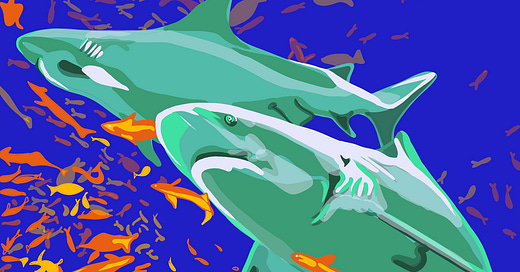An ocean conservation alliance is forming on Mexico’s shores
Up and down the Yucatan Peninsula – mere miles from the patch of ocean that was recently set ablaze – organisations are coming together in the name of marine biodiversity.
Separating the Gulf of Mexico and the Caribbean Sea, the Yucatan Peninsula is perhaps best known for its Cancun high-rise resorts, and the Mayan archeological sites of Tulum and Chichen Itza.
But the quieter beaches of this vast coastal region are home to some of the most progressive ocean conservation work currently taking place in Mexico.
Broadly connected around Plastic Oceans International’s BlueCommunities initiative, four organisations – Ninth Wave Global/ Yuumtsil Káak Náab on the Gulf Coast, and Centro Ecológico Akumal, Saving Our Sharks, and Flora, Fauna y Cultura de México on the Riviera Maya – are taking steps towards the restoration of the marine environments of Mexico.
These individual organisations have found support and visibility through becoming part of something larger. In the Yucatan, networks of local activism are coming together to spread a vital global message.
“Generating networks brings us closer to other people with the same objectives,” says Pamela Vazquez, coordinator of Playa del Carmen’s Saving Our Sharks, “and promotes collective action and meaningful exchanges between peers.”
Conserving shark and turtle populations
For ten years, the community of divers, ecologists and scientists behind Saving Our Sharks have been advocating for the protection of sharks’ habitats. With the help of authorities, divers, universities, and tour operators, SOS oversees a telemetric shark monitoring network. It uses GPS, ultrasound and other technology to monitor movement, alongside breeding and feeding patterns.
SOS has also campaigned for the removal of shark products from shops and restaurants, laws protecting sharks and their habitats, no-fishing zones, biospheres, and more.
Centro Ecológico Akumal focuses on another of Mexico’s endangered creatures: the sea turtle. Its research and outreach programmes are concentrated in Akumal – a coastal resort with white sandy beaches and a bright turquoise lagoon, whose name translates to ‘Place of the Turtles’.
CEA patrols and monitors four turtle nesting beaches in Akumal; staff members known as tortugueros work with turtles to ensure safety during nesting season, and collect data on survival rates.
Nearly all species of sea turtle are classified as endangered, due in part to the habitat destruction and light pollution caused by rapid and unplanned development. Turtles hatch on beaches, and have evolved over many years to find the ocean through its brighter horizon. However, in built-up areas baby turtles can become confused by man-made lights and travel away from the water and towards busy roads.
Alongside CEA, Flora, Fauna y Cultura de México is working against this. Taking a more expansive approach to turtle protection, it covers 120km of coastline from Canakihuic, south of Xcaret, to the Sian Ka'an Biosphere Reserve.
It is the largest turtle conservation programme of its kind in the nation.
The team integrates their large-scale monitoring work with the community, aware that in spaces where citizen participation and cultural exchange take place, there is a general development of both the individual and the community.
Stepping back
Susana Argüelles, Project Coordinator at Plastic Oceans Mexico, expresses what, for her, is the most critical aspect of the work being done by BlueCommunities:
“BlueCommunities is a project of major importance,” driven by the “pure and honest satisfaction of a united forward movement”.
It is all about “the investment of time, effort, passion and love [in]to a long-lasting and sustainable project, in favour of common social and environmental wellbeing."
BlueCommunities provides a working example of how grassroots-led change can make a real difference to conservation efforts. In 2020, members in Campeche recorded a record season for the endangered Hawksbill turtle in their area of care, with 6,400 hatchlings making it to the ocean.
"A bit dramatic, perhaps,” says Salvador Avila, Executive Director for Plastic Oceans Mexico, “but in my mind I see us as a wall of interlocking arms against the rising tide of waste. And more than just a wall, more than an immovable body of resistance, I see a living organism not just bearing against the tide, but actually walking forwards to reverse it.”


Around a week and a half ago, the world watched as an ‘eye of fire’ erupted on the surface of the Gulf of Mexico – just west of the Yucatan Peninsula. Caused by a gas leak from an underwater pipeline, it took over five hours to extinguish. This will have had tragic consequences for shark and turtle numbers – but the work of BlueCommunities continues unabated.
Historically, Mayan communities have always worked from within. The proliferation of BlueCommunities in the Yucatan is a logical extension of this indigenous autonomy. Its result is a pioneering brand of environmentalism – embodying values that are necessary in communities across the world, not merely in those within reach of the water.
Shannon Collins is a freelance environmental journalist for Mexico News Daily and other publications, working from Campeche, Mexico.




